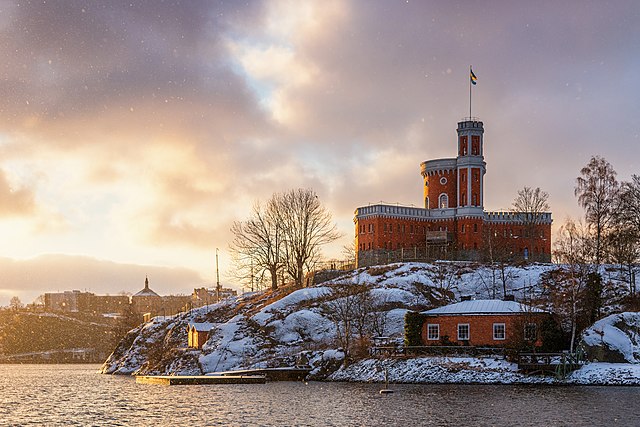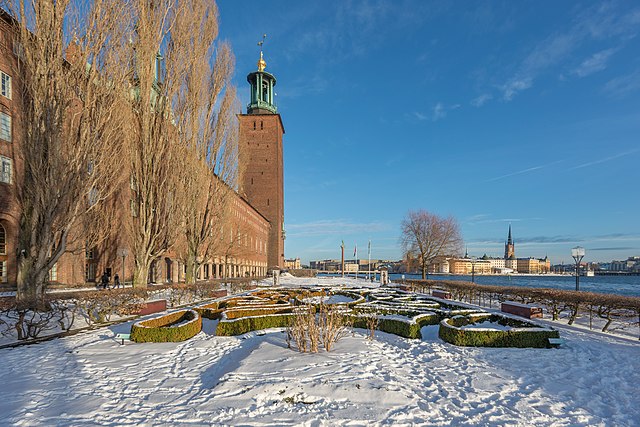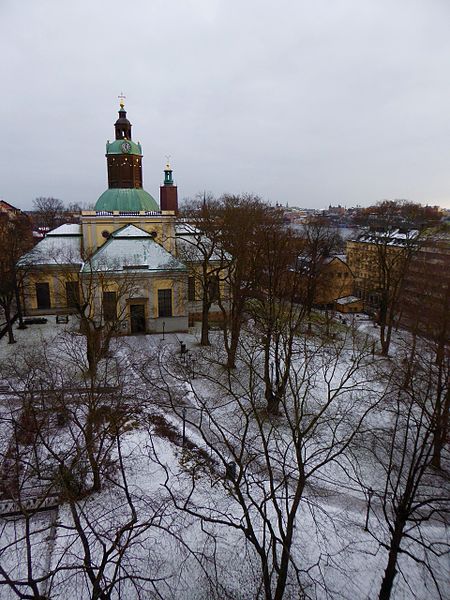
Thammasat University students interested in architecture, engineering, urban planning, design, and horticulture may find it interesting to participate in a free webinar on Unlocking the potential of urban green infrastructure.
The event is organized by the Department of Urban Planning and Design, The University of Hong Kong (HKU).
The TU Library collection includes several books about different aspects of urban green infrastructure.
The speaker will be Professor Erik Andersson, a principal researcher with Stockholm Resilience Centre, Stockholm University and the Ecosystems and Environment Research Programme, University of Helsinki, Finland.
As the event abstract notes,
While green and blue infrastructure is recognized throughout the world for its multifunctionality and its large potential to effectively target and engage with existing and novel urban challenges, such as climate change or public health, the full understanding of how it fits into the social, ecological and technological totality of the urban system lags behind.
Theory and insights from social-ecological-technological systems (SETS) research and resilience thinking can help us build a systemic understanding of the generation and delivery of green and blue infrastructure benefits may inform cross-sectoral strategies and interventions for building resilience around urban quality of life and human wellbeing. A more holistic systems framing can ensure that intended ‘solutions’ better address sustainability broadly and extend to issues of equity, power, agency, nature-based solutions and ecological resilience.
Publications by Professor Andersson are available to TU students on TU Library research databases and through the TU Library Interlibrary Loan (ILL) service.
The event will be held on Thursday, 30 June 2022 at 3pm Bangkok time.
Students are not required to register but may go to this link to participate:
https://hkuems1.hku.hk/hkuems/ec_hdetail.aspx?guest=Y&UEID=82086
Zoom ID: 970 7705 0979
For further information or with any questions, please write to the following email address:
mccleung@hku.hk
The Stockholm Resilience Centre (SRC), is a research center on resilience and sustainability science at Stockholm University. It is a joint initiative between Stockholm University and the Beijer Institute of Ecological Economics at the Royal Swedish Academy of Sciences.
The centre states that its mission is to:
- advance the scientific understanding of the complex, dynamic interactions of people and nature in the Biosphere
- train the next generation of sustainability researchers and leaders
- engage in collaborations with change agents
- The SRC has a particular focus on social-ecological resilience, where humans and nature are studied as an integrated whole. The centre advises policymakers and industry on ecosystem management and long-term sustainable and equitable development in Europe and elsewhere around the world…
Research
- Stockholm Resilience Centre consists of six focus areas which concentrate research on specific angles of sustainability science, resilience and social-ecological systems:
- The human ocean focus area engages in new and emerging research frontiers for a more sustainable and equitable future for the ocean.
- The food for resilience focus area studies the prerequisites for and pathways to sustainable and resilient global food systems.
- The Anthropocene dynamics focus area explores how global biophysical and socioeconomic dynamics emerge, interact, and shape the relationships between humans and nature, and what the social and environmental consequences are.
- The resilience and sustainable development focus area addresses the challenges and the diversity of trajectories associated with sustainable development for all in the context of the Anthropocene.
- The interacting complexities focus area explores how to address complex sustainability challenges by drawing on different complexity perspectives.
- The stewardship and transformative futures focus area explores the knowledge systems, values, meanings, practices, behaviours, and governance arrangements that can contribute to fair and just sustainable futures.
Education
Along with a PhD programme in Sustainability Science SRC also operates a Masters programme in Social-Ecological Resilience for Sustainable Development and a number of specialised courses, such as its executive programme in resilience thinking aimed at CEOs and chairpersons and a number of Stockholm University courses focused on global change, sustainable business, social-ecological resilience and systems theory.

The European Environment Agency (EEA) is an agency of the European Union, whose task is to provide sound, independent information on the environment. The EEA aims to support sustainable development by helping to achieve significant and measurable improvement in Europe’s environment, through the provision of timely, targeted, relevant and reliable information to policymaking agents and the public.
EEA publications on urban green infrastructure available for free download online as Open Access publications include one that asks:
What is green infrastructure?
Green Infrastructure (GI) is based on the principle that ‘protecting and enhancing nature and natural processes […] are consciously integrated into spatial planning and territorial development’. Accordingly, the Green Infrastructure Strategy defines GI as ‘a strategically planned network of natural and semi-natural areas with other environmental features designed and managed to deliver a wide range of ecosystem services’ in both rural and urban settings (EC, 2013a).
In contrast to the most common ‘grey’ (man-made, constructed) infrastructure approaches that serve one single objective, GI promotes multifunctionality, which means that the same area of land is able to perform several functions and offer multiple benefits if its ecosystems are in a healthy state. More specifically, GI aims to enhance nature’s ability to deliver multiple valuable ecosystem goods and services, potentially providing a wide range of environmental, social, climate change adaptation and mitigation, and biodiversity benefits.
Moreover, GI favours a more sustainable and resource efficient development process by encouraging the use of Europe’s limited space in a coherent, smart and integrated way.
GI comprises a wide range of environmental features that operate at different scales and form part of an interconnected ecological network. At the same time, these features must be multifunctional; they must be more than simply ‘a green space’. For example, a single tree in the middle of a city or an isolated patch of uniform grass are unlikely to be qualified as GI unless they also contribute to key local environmental values. Nevertheless, these spatial features may operate at different scales, from small linear features to entire functional ecosystems, and may contribute to GI in urban, peri-urban and rural areas, and both inside and outside protected areas.
It should be highlighted that GI is designed to maintain and enhance the delivery of benefits to human society in the form of food, materials, clean water, clean air, climate regulation, flood prevention, pollination, and recreation among others. These benefits are known as ecosystem services. Direct access to the benefits these services provide is particularly important in urban areas and their fringes, where most people live and where the highest population densities are found…
What is European policy on green infrastructure?
Green infrastructure offers attractive solutions to environmental, social and economic issues, and as such needs to be fully integrated across different policy domains.
Green infrastructure will play a key role in achieving EU policy objectives in a variety of interconnected environmental areas, especially when using nature based solutions to preserve natural capital. This is particularly true for those policies regarding biodiversity conservation, territorial development and cohesion, climate change mitigation and adaptation, agriculture, and forestry management.
The EU 2020 Biodiversity Strategy, adopted in 2011, addresses the main drivers of biodiversity loss. Notably, it focuses on maintaining and enhancing ecosystem services and restoring degraded ecosystems by incorporating Green Infrastructure in spatial planning:
By 2020, ecosystems and their services are maintained and enhanced by establishing green infrastructure and restoring at least 15 % of degraded ecosystems.
In addition, the strategy relies on Member States to set ‘priorities to restore and promote the use of green infrastructure’ in order to achieve ecosystem restoration from sub-national to EU level…
The use of land is nearly always a trade-off between various social, economic and environmental needs (e.g. housing, transport infrastructure, energy production, agriculture, nature protection). Decisions on land use are long term commitments which are difficult or costly to reverse.
Therefore, it is necessary to better integrate direct and indirect land use and their environmental impacts in decision making at all levels…

(All images courtesy of Wikimedia Commons)
